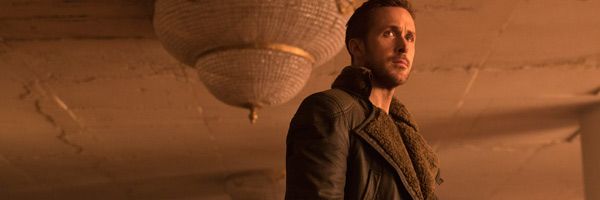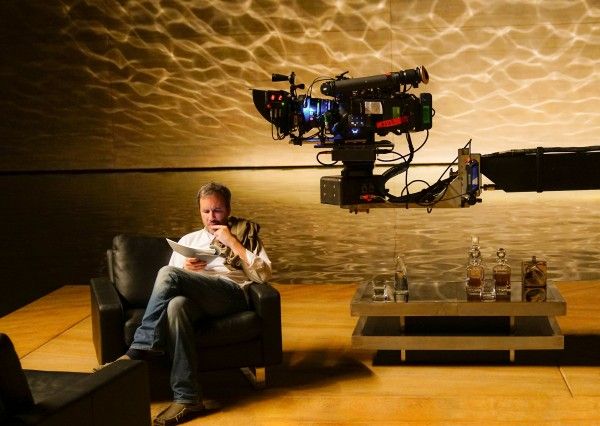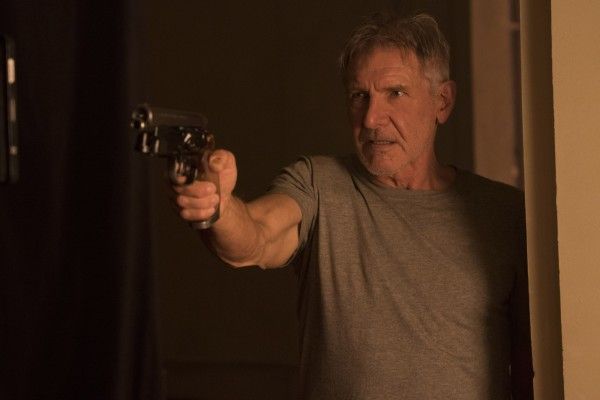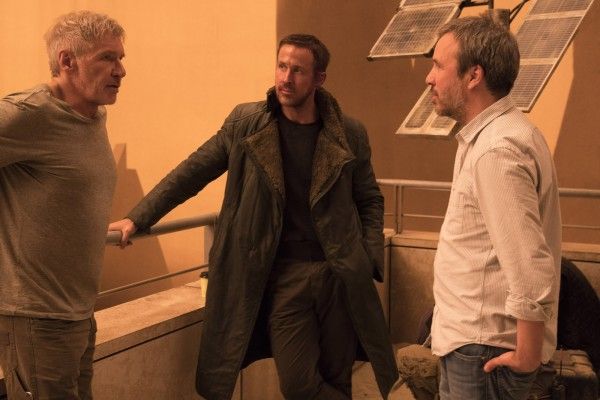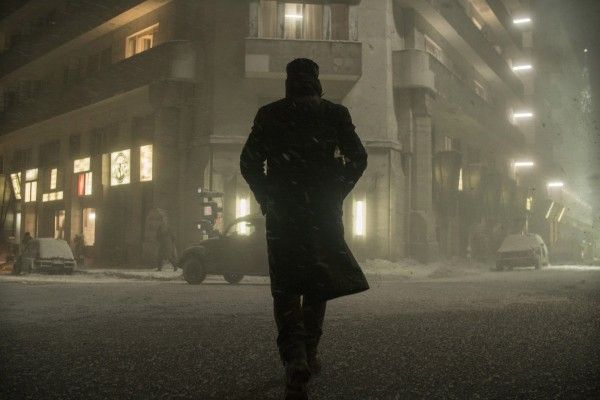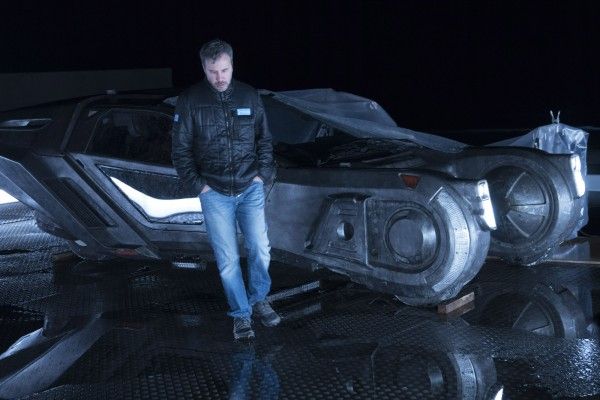Spoilers for Blade Runner 2049 follow below.
If you’ve seen Blade Runner 2049 you know it’s a long movie, but that doesn’t mean it was an easy film to edit. Indeed, Denis Villeneuve’s sequel has a very deliberate pace, and while the running time is hefty, there’s really not a ton of fat on it. It’s a film that takes its time with scenes, letting them breathe in a dreamlike state that mirrors the internal struggle of K (Ryan Gosling), a replicant who thinks me may be special.
Joe Walker, Villeneuve’s editor on Arrival and Sicario who also cut films like 12 Years a Slave and Blackhat, recently sat down for an extended talk with Provideo Coalition (via The Playlist), where he offered some fascinating insight into the editing process of Blade Runner 2049, including deleted scenes and a four-hour assembly cut. Walker revealed that after putting together the assembly, they divided the movie into two halves and realized the story had an organic turn smack dab in the middle:
The first assembly of the film was nearly four hours and for convenience sake and – to be honest – my bladder’s sake, we broke it into two for viewings. That break revealed something about the story – it’s in two halves. There’s K discovering his true past as he sees it and at the halfway mark he kind of loses his virginity. (laughs) The next morning, it’s a different story, about meeting your maker and ultimately sacrifice – “dying is the most human thing we do”. Oddly enough both halves start with eyes opening. There’s the giant eye opening at the beginning of the film and the second when Mariette wakes up and sneaks around K’s apartment, the beginning of the 1st assembly part 2. We toyed with giving titles to each half but quickly dropped that. But what does remain is that there’s something of a waking dream about the film. That’s a very deliberate choice in terms of visuals but also the kind of pace they were striving for on set and the hallucinatory feel in the cut – it’s the kind of dream where you tread inexorably closer to the truth.
Walker says there aren’t a ton of deleted scenes on the cutting room floor, and Villeneuve has already said he doesn’t like revealing deleted scenes anyway, but there was apparently an aerial sequence that was removed:
So what could we cut? Firstly, a lot of connective tissue and bridges. For example, there was a really magnificent aerial sequence when K and Joi fly to Las Vegas. It was one of those rare occasions when it was raining on the hills outside Las Vegas, God’s contribution to Blade Runner 2049. But it just felt more impactful to go straight to the pilot fish’s view of this strange landscape and hear K’s distorted commands, to skip ahead of the audience for a while. For the vast bulk of the tightenings, we pared the dialogue down to the minimum amount you could get away with, allowing us to play the beats that remained very intensely.
Most interestingly, however, is the fact that the showdown between K and Deckard (Harrison Ford) was nearly on the chopping block, as the intricate sequence took a lot of time to get right:
….one sequence we didn’t talk about is the Hologram Funhouse. That was a big deal in the cutting room, and probably the hardest and longest sequence to work on. This is the scene where Deckard traps K in the nightclub and flips a switch that summons a broken hologram show to life. To gauge the scale of the operation, on that scene alone there were 21 fine cuts, just of the pre-viz. That gave us a solid idea of music for playback and a template for Roger to design his lighting. Denis and the main unit then filmed the scene for real with Deckard and K, with Ben Thompson in the background as Elvis. They shot old-school without a motion control rig. Then we had a weekend to frantically fine cut this material and then break everything down again so that we could go back to set with the 2nd unit and shoot all the holograms: the Folies Bergere, Elvis’s band, Cowgirls, Gogo dancers, Liberace, Marilyn Monroe, you name it. We had to get it right because when you cut from one angle to the other, the dancers had to do their high kicks on exactly the same beat whilst staying in sync with lighting effects already shot by Roger. That’s a really complicated thing to achieve, technically. I ended up with dozens of video tracks running for each shot and my temp team set about creating more polished versions.
But when Walker and Villeneuve got into the editing room, the sequence wasn’t working:
So when we got back to Los Angeles, soon after Thanksgiving 2016, we sat and watched the First Assembly. Denis said, everything is fantastic, it’s going to work, except one scene: the Hologram Funhouse. We’d been toiling on that on and off for six months so it was disappointing, but I knew he was right. Tonally it didn’t fit, it didn’t feel like Blade Runner. Denis’ point was that the last time Deckard met a Replicant, it was Roy Batty, who nearly killed him. So this should be full of fear and tension. A manhunt, not a variety act. Deckard turns on those holograms because it gives him an advantage, he knows where and when the light will fall. So Denis and I recut the scene to maximize this and we dumped a lot of the layers of holograms. Really great footage of pole dancers spinning down from the ceiling, all had to go.
I wanted to emphasize the spookiness of this broken machine and I dug around and found some golden moments before “action” where the dancers were waiting for the playback music to start –just breathing, standing by, lit heavily from above. These ended up in the cut. We tried to put in as many dead and broken holograms as living ones.
The big transformation was dumping the music almost entirely. We just had this idea it would be creepier if just one little speaker somewhere in this vast room would suddenly spit out some audio. Theo Green our sound designer worked with me the entire length of the project. He came up with this amazing track of all the lighting units shifting and the crackling of bulbs firing up. That absolutely nailed it. Denis loved the new sequence and it was back in, but at one stage it was so far from the ‘Bladiverse,’ its head was on the guillotine and we were reading it last rites.
Thank God they figured it out because that’s one of the standout sequences in the whole film, and it works beautifully. While the box office was disappointing, here’s hoping this exceptionally crafted sci-fi blockbuster isn’t forgotten come awards season.
For more on Blade Runner 2049, check out my interview with composer Benjamin Wallfisch.

